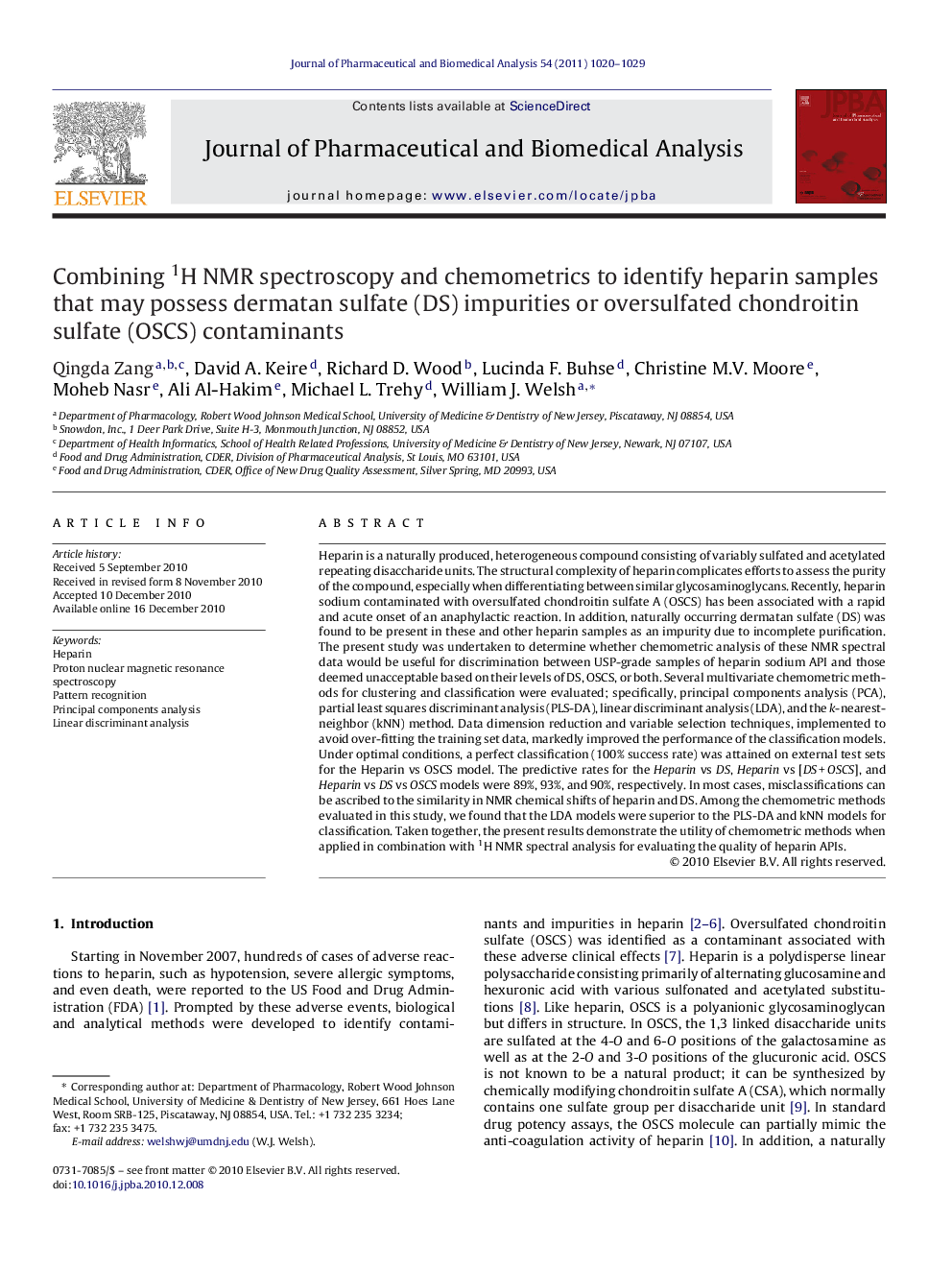| کد مقاله | کد نشریه | سال انتشار | مقاله انگلیسی | نسخه تمام متن |
|---|---|---|---|---|
| 1222602 | 967868 | 2011 | 10 صفحه PDF | دانلود رایگان |

Heparin is a naturally produced, heterogeneous compound consisting of variably sulfated and acetylated repeating disaccharide units. The structural complexity of heparin complicates efforts to assess the purity of the compound, especially when differentiating between similar glycosaminoglycans. Recently, heparin sodium contaminated with oversulfated chondroitin sulfate A (OSCS) has been associated with a rapid and acute onset of an anaphylactic reaction. In addition, naturally occurring dermatan sulfate (DS) was found to be present in these and other heparin samples as an impurity due to incomplete purification. The present study was undertaken to determine whether chemometric analysis of these NMR spectral data would be useful for discrimination between USP-grade samples of heparin sodium API and those deemed unacceptable based on their levels of DS, OSCS, or both. Several multivariate chemometric methods for clustering and classification were evaluated; specifically, principal components analysis (PCA), partial least squares discriminant analysis (PLS-DA), linear discriminant analysis (LDA), and the k-nearest-neighbor (kNN) method. Data dimension reduction and variable selection techniques, implemented to avoid over-fitting the training set data, markedly improved the performance of the classification models. Under optimal conditions, a perfect classification (100% success rate) was attained on external test sets for the Heparin vs OSCS model. The predictive rates for the Heparin vs DS, Heparin vs [DS + OSCS], and Heparin vs DS vs OSCS models were 89%, 93%, and 90%, respectively. In most cases, misclassifications can be ascribed to the similarity in NMR chemical shifts of heparin and DS. Among the chemometric methods evaluated in this study, we found that the LDA models were superior to the PLS-DA and kNN models for classification. Taken together, the present results demonstrate the utility of chemometric methods when applied in combination with 1H NMR spectral analysis for evaluating the quality of heparin APIs.
Journal: Journal of Pharmaceutical and Biomedical Analysis - Volume 54, Issue 5, 5 April 2011, Pages 1020–1029